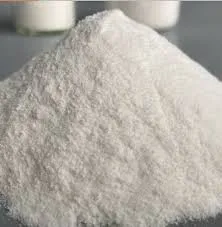
Nov . 24, 2024 12:54 Back to list
Exploring Diverse Applications of HPMC in Pharmaceutical and Food Industries
HPMC Applications An Overview
Hydroxypropyl Methylcellulose (HPMC) is a versatile cellulose derivative that has gained significant attention in various industrial applications due to its unique physical and chemical properties. As a non-ionic cellulose ether, HPMC is soluble in cold water and is widely used in pharmaceutical, food, construction, and personal care industries. This article aims to explore the diverse applications of HPMC, highlighting its multifunctional capabilities and the benefits it offers.
Pharmaceutical Applications
One of the predominant applications of HPMC is in the pharmaceutical industry, where it serves multiple roles. HPMC is commonly used as a binder, thickener, and film former in tablet formulations. Its ability to form gels upon hydration makes it an ideal excipient for controlled-release drug formulations, allowing for a consistent release of active ingredients over an extended period. This property is particularly valuable in developing medications for chronic conditions, where sustained release can enhance patient compliance and therapeutic effectiveness.
In addition to solid dosage forms, HPMC is used in ocular preparations due to its excellent bioadhesive properties. Eye drops containing HPMC can provide prolonged contact with the corneal surface, improving the efficacy of the treatment and reducing the need for frequent application. Furthermore, its use as a thickening agent in topical formulations enhances the stability and viscosity of creams and ointments, facilitating their application and absorption.
Food Industry
HPMC is increasingly utilized in the food industry as a food additive and thickening agent. It is recognized for its ability to improve texture, stabilize emulsions, and enhance moisture retention in various food products. Common applications include baked goods, dairy products, sauces, and dressings. The incorporation of HPMC can lead to improved mouthfeel and consistency, making it a preferred choice for food manufacturers seeking to enhance product quality without compromising shelf life.
Another notable application of HPMC in the food industry is its use as a fat replacer. In low-fat and reduced-calorie products, HPMC provides a creamy texture, mimicking the mouthfeel of traditional fats while reducing overall caloric content. This versatility aligns with the growing consumer demand for healthier food options, making HPMC an essential ingredient in modern food formulations.
hpmc applications

Construction Industry
The construction industry also benefits from the unique properties of HPMC, particularly in the formulation of mortars, concretes, and adhesives. Due to its water-retention capabilities, HPMC helps to improve the workability of cement-based products, ensuring that they remain workable for longer periods. This is crucial in construction applications where extended application time can significantly influence the quality of the final product.
Moreover, HPMC acts as a thickening agent in tile adhesives, providing excellent adhesion and enhancing the flexibility of the adhesive system. These properties contribute to the durability and longevity of construction materials, making HPMC a valuable component in modern construction practices.
Personal Care Products
In the personal care industry, HPMC is extensively used in a variety of cosmetic and personal hygiene products, including creams, lotions, shampoos, and conditioners. Its thickening and stabilizing properties contribute to the desired viscosity and texture of these formulations. Additionally, HPMC can enhance the spreadability and absorption of topical products, improving the overall user experience.
HPMC is also employed in the manufacturing of hair styling products due to its ability to form flexible films that provide hold without stiffness. Its non-toxic nature and skin compatibility further enhance its appeal in personal care formulations, offering safe options for consumers.
Conclusion
The applications of Hydroxypropyl Methylcellulose (HPMC) are vast and varied, spanning numerous industries. Its multifunctional properties, including binding, thickening, emulsifying, and film-forming capabilities, make it an invaluable ingredient in pharmaceuticals, food products, construction materials, and personal care formulations. As industries continue to evolve and seek sustainable and effective solutions, the demand for HPMC is likely to grow, positioning it as a vital contributor to innovation across various sectors.
-
Versatile Hpmc Uses in Different Industries
NewsJun.19,2025
-
Redispersible Powder's Role in Enhancing Durability of Construction Products
NewsJun.19,2025
-
Hydroxyethyl Cellulose Applications Driving Green Industrial Processes
NewsJun.19,2025
-
Exploring Different Redispersible Polymer Powder
NewsJun.19,2025
-
Choosing the Right Mortar Bonding Agent
NewsJun.19,2025
-
Applications and Significance of China Hpmc in Modern Industries
NewsJun.19,2025







